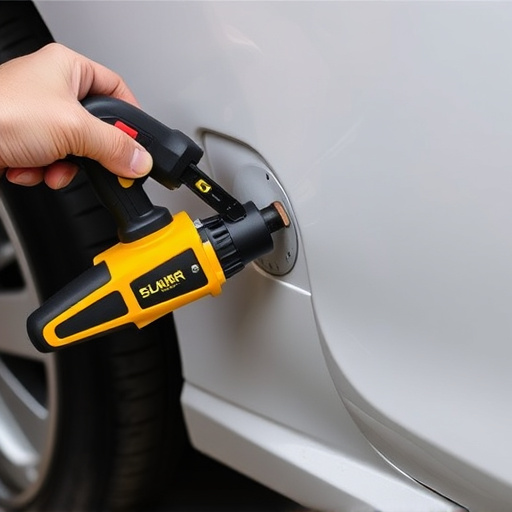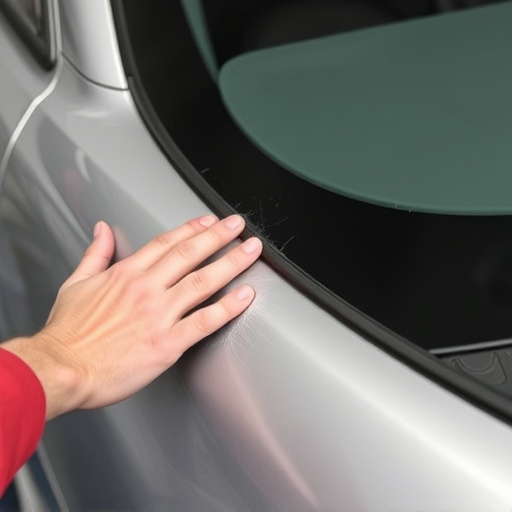The traditional automotive repair system lacks transparency, leading to customer mistrust and dissatisfaction. Adopting a transparent repair process, where clients understand assessments, disassembly, materials, and timelines for repairs like Mercedes Benz or car paint restoration, builds trust and fosters partnerships between auto collision centers and customers. This approach benefits both parties: customers gain peace of mind, while businesses gain a competitive edge through ethical practices, improved efficiency, and encouraged repeat business.
The modern service industry is demanding transparency in every aspect, and the repair process is no exception. Traditionally, this sector has faced challenges due to opaque procedures, hindering consistent quality and customer satisfaction. This article delves into the transformative power of a transparent repair process, exploring its impact on enhancing service consistency. We’ll dissect the benefits for both customers and businesses, highlighting how such transparency can revolutionize industry standards.
- Understanding the Traditional Repair Process and Its Challenges
- How Transparency Improves Service Consistency
- Benefits of a Transparent Repair Process for Customers and Businesses
Understanding the Traditional Repair Process and Its Challenges

The traditional repair process in the automotive industry has long been a closed system, shrouded in secrecy for many years. When a vehicle arrives at a body shop, typically after an accident or damage, the tasks involved are often seen as a black box by customers. This includes assessments, disassembly, repairs, and subsequent reassembly. While skilled technicians perform these tasks with expertise, the lack of transparency can leave clients uncertain about what exactly is happening to their vehicle.
The challenges arise when communication is lacking between repair shops and car owners. Most vehicle bodywork repairs, especially for minor damages like a bumper repair, require intricate precision. Customers deserve to understand the extent of the work, the materials used, and the timeline involved without feeling left in the dark. This opacity can breed mistrust and dissatisfaction, impacting the overall service consistency and customer experience. A transparent repair process is thus crucial to fostering trust and ensuring clients receive high-quality, reliable body shop services.
How Transparency Improves Service Consistency

Transparency in the repair process plays a pivotal role in ensuring consistent service quality at auto collision centers. When customers understand the steps involved in repairing their vehicles, such as meticulous Mercedes Benz repair or comprehensive car paint repair, they can have greater trust in the outcome. This transparency fosters a sense of partnership, encouraging owners to actively participate in decisions that affect their cars’ condition.
By providing clear and regular updates on repairs, auto collision centers create a predictable environment. Customers know what to expect during each stage, reducing anxiety often associated with vehicle damage. Moreover, this openness allows for immediate addressing of concerns, ensuring any issues are resolved promptly. As a result, the center’s reputation for reliable service grows, solidifying its position as a trusted partner in car care.
Benefits of a Transparent Repair Process for Customers and Businesses

A transparent repair process offers significant advantages for both customers and businesses providing body shop services, such as car paint repair and auto detailing. For customers, knowing exactly what repairs are needed, their estimated costs, and how long they will take instills confidence and trust in the service provider. This openness allows them to make informed decisions about their vehicle’s maintenance without any surprises or hidden fees.
Businesses that adopt a transparent approach to repairs gain competitive advantages. It fosters positive relationships with clients by demonstrating ethical practices. Moreover, it can lead to higher customer retention rates as satisfied customers are more likely to return for future services. Additionally, a transparent system streamlines operations by reducing misunderstandings and miscommunications, ultimately enhancing the efficiency of body shop services.
The adoption of a transparent repair process offers a transformative approach to enhancing service consistency. By eliminating the opacity surrounding repair activities, businesses can foster trust among customers and significantly improve overall service quality. This paradigm shift not only benefits consumers by providing clear communication and timely updates but also empowers businesses to streamline their operations, reduce costs, and boost customer satisfaction. Embracing transparency in the repair process is a strategic move that positions organizations for long-term success and competitive advantage in an increasingly demand-driven market.














